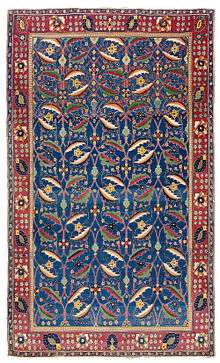Eythrope

Eythrope (previously Ethorp) is a hamlet and country house in the parish of Waddesdon, in Buckinghamshire, England. It is located to the south east of the main village of Waddesdon (where the 2011 Census population was included). It was bought in the 1870s by a branch of the Rothschild family, and belongs to them to this day.
History
The hamlet name is Anglo Saxon in origin, and means "island farm", referring to an island in the River Thame that flows by the hamlet. The medieval village of Eythrope is deserted and all that remains are some earthen banks and ditches on the eastern side of Eythrope Park. There was a manor house at this hamlet as early as 1309, when it was the home of the Arches family. It was extended in 1610 by Sir William Dormer.[1]
William Stanhope (1702–1772) embellished Eythrope House around 1750. Stanhope employed Isaac Ware to build new stables (now lost) and follies in the garden and park. Two of these buildings survive: the grotto by the lake, and the bridge over the River Thame. The house was demolished in 1810-11 by Philip Stanhope, 5th Earl of Chesterfield.[2]
In 1875 the manor at Eythrope was bought by Alice de Rothschild. She was the sister and companion of Baron Ferdinand de Rothschild who owned the neighboring estate Waddesdon Manor. The new house at Eythrope was not built on the site of the old manor. While building was in progress Alice fell ill with rheumatic fever and was advised to avoid damp conditions at night. As Eythrope was next to the river Thame, the plans were altered. The house was built without bedrooms as a place to house her collections and entertain guests during the day.[3]
Alice chose one of the Rothschild family's favourite architects George Devey who had worked at nearby Ascott House, Aston Clinton House and Mentmore Towers. Eythrope was something of a deviation from his usual approach. It is constructed in red brick with stone dressings. With its twisting chimneys, turrets and gables, it is a mixture of Devey's usual Jacobean style and the French Renaissance architecture of Waddesdon Manor. This is especially noticeable on the concave roof to the round tower, and the gable on the garden facade which are particularly reminiscent of Waddesdon. Because of its small size the house was christened "The Pavilion" or the "Water Pavilion".[4]
As in other Rothschild homes, French paneling and furniture dressed the rooms. Alice also collected Renaissance sculpture, paintings and maiolica ware.
Around the house, Alice developed 30 hectares of highly ornamental and innovative gardens that rivaled the splendor of Waddesdon Manor. She also created a large kitchen garden and added the Old English Tea House (now lost) to the historic parkland.[5] A large, long stable block (listed grade II), built in stone and half-timber, with references to Waddesdon Manor, as well as three picturesque lodges, were probably designed by W Taylor & Son of Bierton.[6] House parties from Waddesdon Manor would drive the four miles for tea, taking a steam launch up the river to the tea house.[7]
In 1922 following Alice's death, The Pavilion was inherited by James Armand de Rothschild and his wife Dorothy. From 1922 to around 1939, they let it to the wife of Somerset Maugham who added bedrooms and bathrooms in a wing that later collapsed. In the 1950s the Rothschilds decided to give Waddesdon Manor, which they also had inherited, to the National Trust and move to the smaller pavilion. The house was improved and modernized. James de Rothschild died in 1957, before the house was ready. Following the transfer of Waddesdon, his widow Dorothy moved to Eythrope.[8]
Present day
Dorothy de Rothschild died in 1988 and left the estate and Pavilion to her husband's great nephew Jacob Rothschild, 4th Baron Rothschild. The house is the last of the Buckinghamshire Rothschild houses to remain in Rothschild hands. It operates as a private home.
The gardens continue to be developed and maintained, growing vegetables, fruit and flowers for the estate. The walled garden was designed by Mary Keen in 1990.[9]
TV & film
Scenes from And Then There Were None by Agatha Christie screened on BBC One 26–28 December 2015 were filmed on the Estate roads and on the bridge at Eythrope.
See also
References
- ↑ "GENUKI entry on Waddesdon". Retrieved 2015-09-28.
- ↑ "Historic England, Eythrope". Retrieved 2015-09-28.
- ↑ "The Rothschild Archive, Eythrope Estate". Retrieved 2015-09-28.
- ↑ Jill Allibone, George Devey Architect, 1820-1886 (Lutterworth, 1991) ISBN 0718827856, 9780718827854
- ↑ "Historic England, Eythrope". Retrieved 2015-09-28.
- ↑ Pevsner, Nikolaus; et al. (1994). Buckinghamshire (revised ed.). Yale University Press. p. 322. ISBN 0300095848.
- ↑ Hall, Michael (2009). Waddesdon Manor: The Heritage of a Rothschild House (revised ed.). Scala. p. 162.
- ↑ de Rothschild, Dorothy (1979). The Rothschilds at Waddesdon Manor. Collins Sons & Co. p. 129.
- ↑ Elfreda Pownall. "Inside the Rothschild's family garden: Eythrope (The Telegraph 19 September 2015)". Retrieved 2015-09-28.
Coordinates: 51°49′12″N 0°52′48″W / 51.820°N 0.880°W

